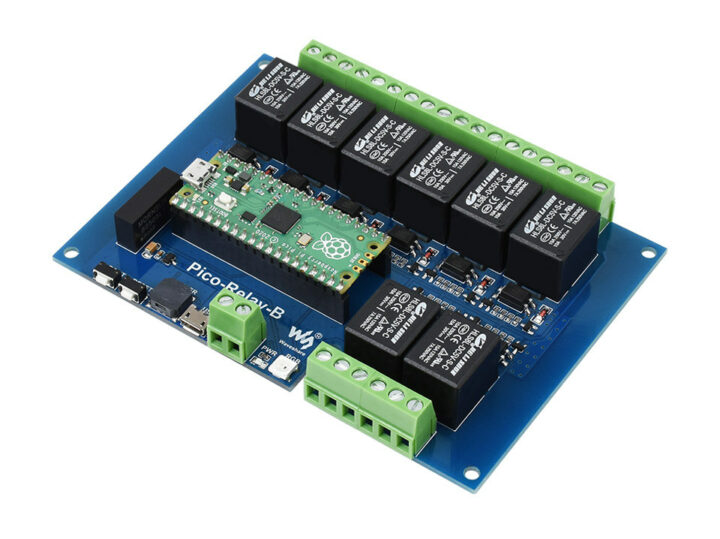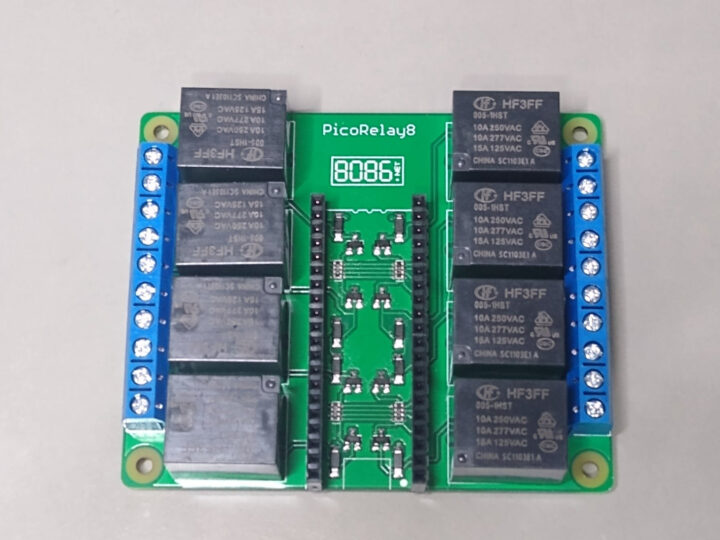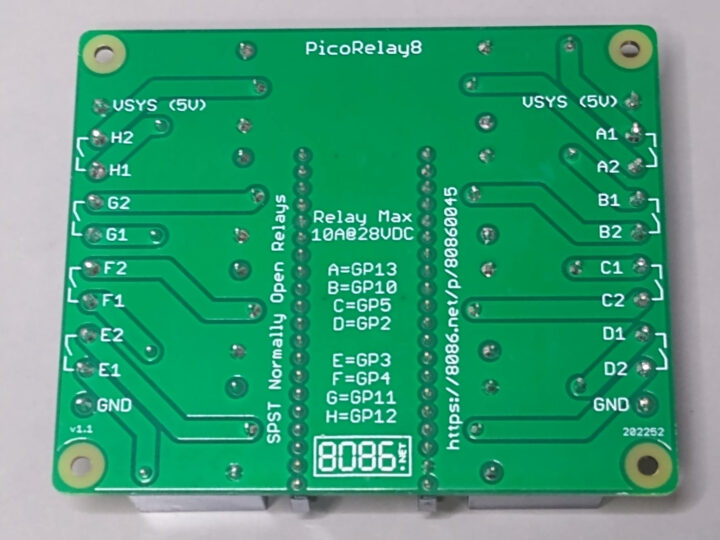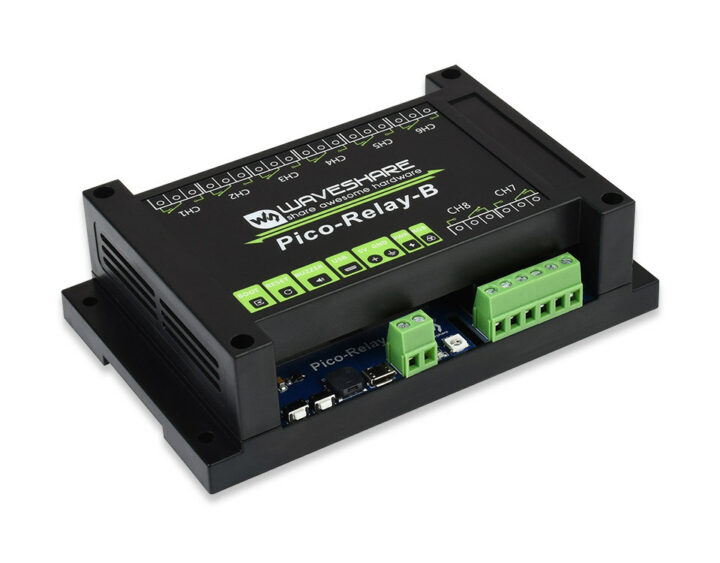8086 Consultancy’s PicoRelay8 is a baseboard for the Raspberry Pi Pico (W) board equipped with eight 28V DC / 10A Normally Open relays that be used for all sorts of automation projects, while Waveshare Pico-Relay-B also supports eight relays with both DC and AC loads and comes with some extra features.
PicoRelay8
PicoRelay8 board specifications:
- Supported MCU board – Raspberry Pi Pico or Pi Pico W, and it may also work with “mostly” compatible boards such as the Banana Pi BPI-Pico-RP2040 or BPI-PicoW-S3, WeAct RP2040, and others as long as all GPIO used on the PicoRelay8 are exposed on the same pins.
- Relays
- 8x HF3FF/005-1HST relays rated for 28V DC/10A, as well as 10A/250V AC and 15A/125V AC, but the board is not designed to get power from the mains (safety-wise), so it’s only really suitable for DC loads
- Each relay has a 2-pin terminal block attached to it.
- GPIO high = close the relay to turn on the device attached to it, GPIO low = open the relay
- Power Supply – 5V/500mA with the USB port on the Raspberry Pi Pico board or alternatives; The overall system can consume up to 500mA if all relays are switched at the same time, so make sure you use a properly sized power supply or ensure all relays can not be triggered at the same time.
- Dimensions – TBD
There’s no sample code, but it’s now really needed since the user would just need to toggle GPIOs in the code. The PicoRelay8 is sold on Tindie for $18.80 plus shipping. But our European friends won’t be able to purchase the board on Tindie as UK-based 8086 Consultancy explains that “Due to the 1st July 2021 EU VAT changes and limitations to the Tindie system I’m currently not shipping to the EU”. The PicoRelay8 may eventually be available from other distributors in due time like some other products from the company.
Waveshare Pico-Relay-B

But while researching the topic, I also found an alternative board with similar features: Waveshare Pico-Relay-B described as an “industrial 8-channel relay module for Raspberry Pi Pico with multi- protection”. The PCB comes with photocoupler isolation that allows it to work with up to 220V AC/10A appliances besides DC ones up to 30V/10A, as well as a few extra features such as a buzzer, two buttons, an RGB LED, and a micro USB port to control the GPIOs over USB. A 2-pin terminal is used to power the board, and the company also offers an enclosure.
A wiki is provided showing more hardware details as well as code samples and instructions to get started with C/C++ or MicroPython on the Raspberry Pi Pico. Github user longmover also wrote a MicroPython program to integrate the Pico-Relay-B with Home Assistant over WiFi (MQTT).
Waveshare is selling the Pico-Relay-B on its own store for $18.99 with the enclosure, but no Raspberry Pi Pico. Alternatively, you’ll also find it on Amazon US or Aliexpress for $26-$29 including shipping, as well as various distributors.

Jean-Luc started CNX Software in 2010 as a part-time endeavor, before quitting his job as a software engineering manager, and starting to write daily news, and reviews full time later in 2011.
Support CNX Software! Donate via cryptocurrencies, become a Patron on Patreon, or purchase goods on Amazon or Aliexpress







